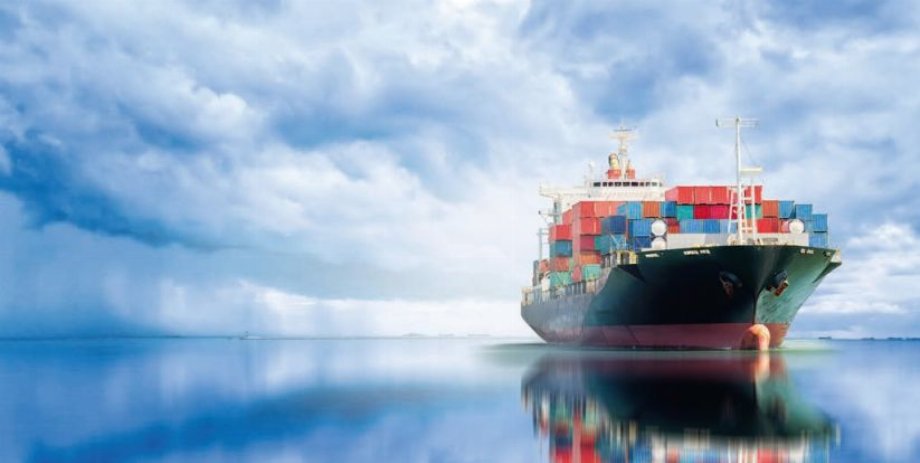WBJ: In connection with environmental trends, the pressure to reduce CO2 emissions and carbon footprints, it is often said that sea transport is the only sensible alternative to air freight. Do you think that sea transport is the future?
Janusz Witanowski: We believe that ocean freight will always be part of any volume-based, long-distance transportation. It is common knowledge that this mode of transport is the most effective cost-wise, allowing the transportation of huge amounts of cargo in one go. Considering the impact of transport on the environment, also known as carbon footprint, ocean freight has one of the lowest – about 14 times lower than air freight. Shipping lines are searching for the most effective means to limit CO2 emissions, such as utilizing different types of fuels like LNG or bio-fuel. Additionally, some are already presenting their customers with data regarding the carbon footprint generated by their shipments to turn their attention to environmental concerns. The rapid expansion of rail transportation, especially on the China-Europe new Silk Route, also presents great opportunities to limit CO2 emissions. This is a great alternative to both sea and air transport, with much shorter transit time than the former and lower cost per unit than the latter. But we need to remember that availability of rail capacity for goods is still limited and remains a bottleneck at present.
Automation in transport is becoming a reality. Autonomous trucks are already being tested. Is the same in store for sea transport?
Dawid Graczyk: Automatic and automated development is already being tested on aircraft and ocean vessels. Most vessels have an “auto pilot” mode, as do aircraft, and this has vastly reduced the need for human involvement in piloting and navigation. However, due to the many additional parameters involved (air and sea travel is a lot more complicated than road or rail), we expect that completely automated voyages will take further development before they become a widespread reality, even if it’s already technically possible.
Based on the opinion of experts, we can expect autonomous ships transporting containers in the near future, at least in some areas. While autonomous ships can carry bulk cargo, unmanned ships will not be able to carry dangerous goods. Unmanned vessels are also friendly to the marine environment, as autonomous ships will have electric propulsion and thus zero emissions.
However, the introduction of unmanned ships poses legal challenges. There are still no provisions authorizing unmanned craft to operate. An important element of transport that needs to be addressed is the exchange of information between ships. Fast information exchange is the key to safe unmanned ship travel. Another problem is liability for disasters and destruction of cargo. The responsibilities of the land operator, shipowner and software designer should be clearly established. Unmanned ships are coming and will be in use in the near future, but we must first prepare well for them.
In August, the largest container ship in the world, with a capacity of 23,000 TEU (twenty-foot equivalent unit), arrived in Gdańsk. Is there a trend to build larger and larger ships?
JW: Yes, this has been the case for the last few years; however, such ships pose certain problems. Not many ports can receive such vessels due to draft and size of berths. The size of cranes used at even the largest terminals is another limitation, as there is a finite number of container rows that can be reached on a vessel. This also decreases the number of ports of call and results in a need to arrange additional transport, increasing total transit time, because smaller feeder ships, rail connections or trucks will need to ferry goods to a central hub port for loading onto these larger vessels. So even if it reduces the cost of the long-haul section of the journey, it can also increase the total cost due to the potential additional handling, extending the loading/unloading process in ports and necessary new investments in infrastructure. After all, it if takes longer for a vessel to complete port operations, it will either result in fewer journeys per year, or it will require increased speed, thereby generating additional fuel expenses.
Sea routes such as the Panama or Suez Canals also pose a limitation. For example, despite recent modernization of the Panama Canal, it is still unable to accept large container ships (over 14,500 TEU). It seems that a further increase in vessel size and capacity is not likely, at least until container terminals catch up in this race.
Is sea transport more competitive than other modes of transport?
DG: Ocean freight costs are still among the most competitive today compared to rail and air. In the case of trade with overseas countries, maritime transport has been and will be the main driving force of economies around the world, despite the significant increase in the importance of rail transport, particularly from the Far East in recent years. For goods where we can afford a delivery time of about four to six weeks, sea transport seems to be optimal.
Given the fact that the economy in Poland and Europe is growing steadily, our producers are opening up more and more to new distant markets, including North and South America, as well as Asia, and the role of maritime transport for shipments of large quantities of goods in the coming years will continue to be important. A number of companies using air transport are looking for alternative, cheaper rail and sea solutions.
In recent years, significant investments have been made in Polish ports, in particular the port of Gdańsk DCT (Deepwater Container Terminal Gdańsk), where the number of transhipped containers increased from 1.2 million TEU in 2016 to 1.9 million TEU in 2018.
Will Brexit make it easier or harder for sea transport to compete with other modes?
JW: This really depends on the nature of the UK’s trade deals with the EU and the potential customs implications. The UK is traditionally an import market for EU countries. It will naturally be impacted if the EU and the UK don’t come up with a Brexit trade deal. If the UK did turn to the US for a trade deal, exports from Poland and other European countries will definitely be affected. Still, no operators are saying they will limit service options to the UK after Brexit. Rather, they are working on how to organize it in the best way around Brexit.
Customs formalities, especially if we see a hard Brexit, may create severe bottlenecks at entry points to the UK for land trucks. Unaccompanied container transport might be a natural choice, cost-wise. Road transit time, bearing in mind possible long queues at borders, may in effect be similar to the sea option.
It is worth mentioning that short sea container transport has always been popular between Poland, the UK and Northern Ireland. At present it is being offered by several short sea operators and main liners.
What are the biggest limitations to the development of sea transport in Poland?
DG: Infrastructure is one of the challenges; not only the ports, but also the connectivity to rural areas by inland waterways, rail and road.
Political conditions are also a very important factor. The imposed restrictions or blockades force customers to look for alternative solutions and other outlets. The best example of this is the significant increase in the export of Polish apples to the Middle East, Egypt and Asia markets.
Is it true that sea transport has contributed to the worldwide popularity of Polish apples?
DG: Poland is one of the largest apple producers in the world. For years, Russia was the main outlet for Polish producers. Due to political decisions, this market was blocked and we had to open up to new opportunities overseas. The high quality and condition of our apples have allowed us to gain new customer bases and build an exclusive brand on the Egyptian and Indian markets, even in Vietnam. We can compete with apples from the US, France or Italy.
Huge amounts of Polish apples, potatoes and other crops are exported by sea every year. Indeed, the volume needed to be shipped is really only possible by sea because of the long distances, low cost and the possibility to load such huge amounts of goods. Also, the special way of transporting apples in cold storage and ventilated containers is vital to keeping them fresh for when they get to market. So, yes, I believe that sea transport contributes a lot to the availability of Polish apples.
Raben, as a specialist in the transport of fresh products, helps Polish exporters in entering new markets. Thanks to the availability of Reefer containers (refrigerated units), we can guarantee our customers safety and assistance in deliveries to far-off, overseas destinations.
 Dawid Graczyk - Seafreight Branch Manager, Raben Group
Dawid Graczyk - Seafreight Branch Manager, Raben Group
 Janusz Witanowski - Seafreight Branch Manager, Raben Group
Janusz Witanowski - Seafreight Branch Manager, Raben Group















 Dawid Graczyk - Seafreight Branch Manager, Raben Group
Dawid Graczyk - Seafreight Branch Manager, Raben Group Janusz Witanowski - Seafreight Branch Manager, Raben Group
Janusz Witanowski - Seafreight Branch Manager, Raben Group




